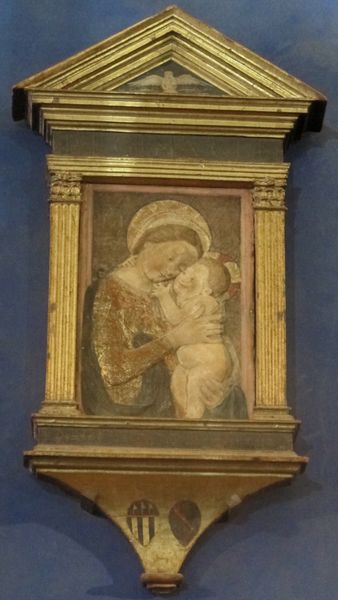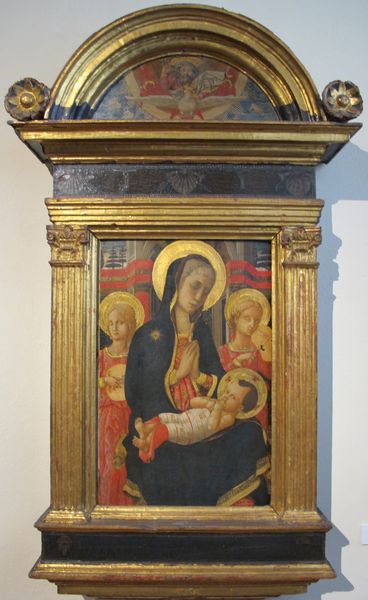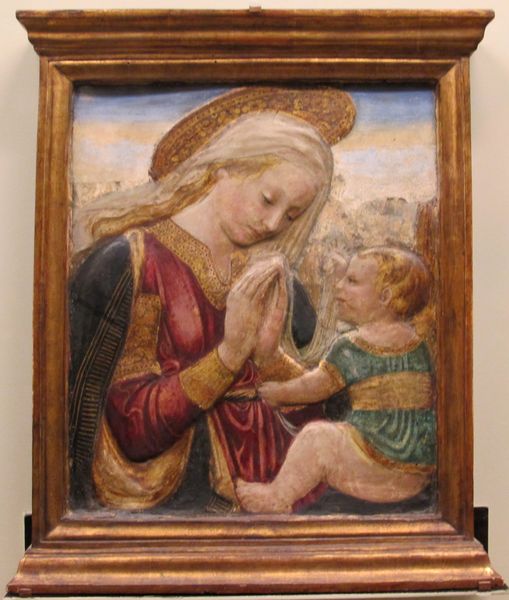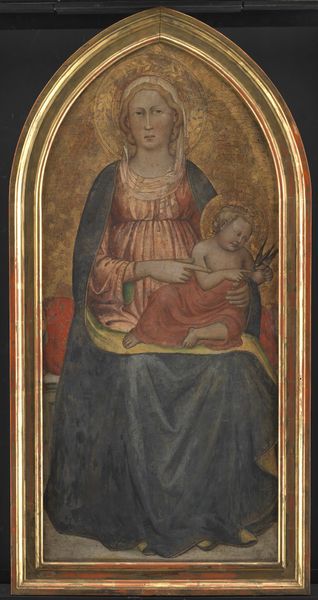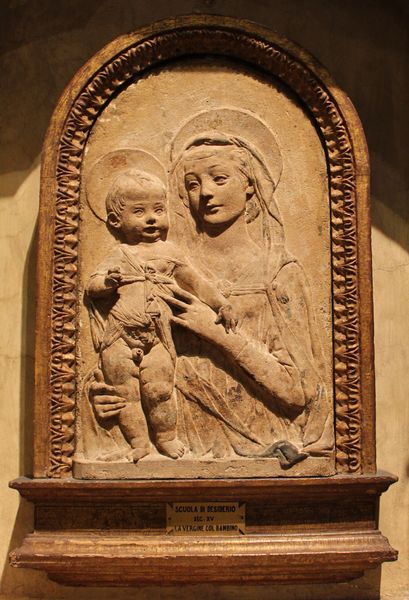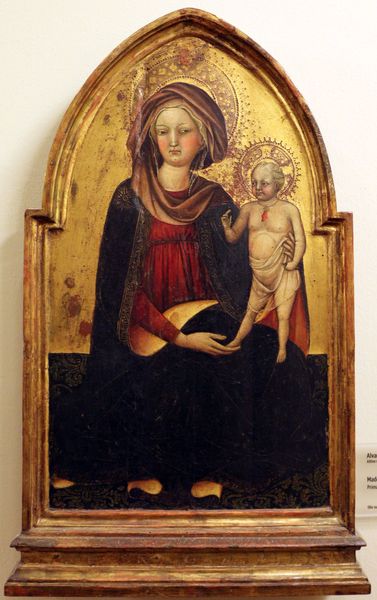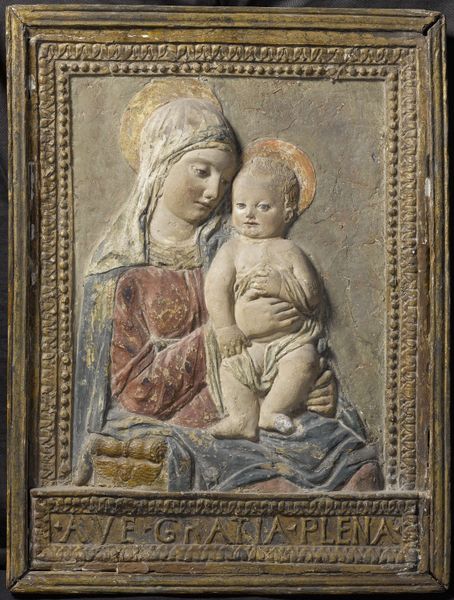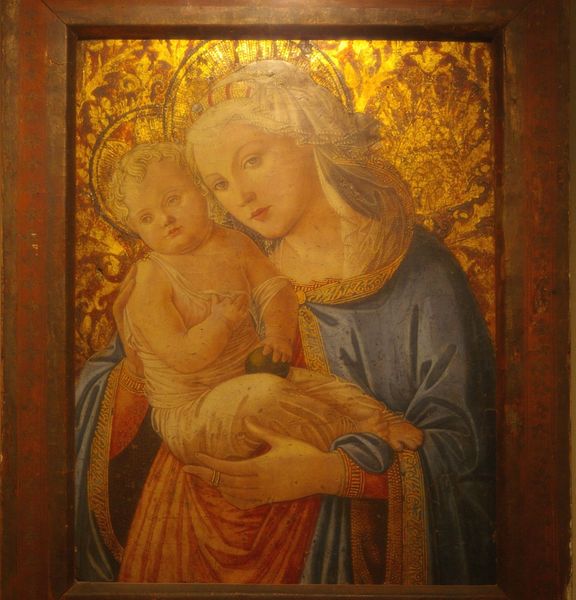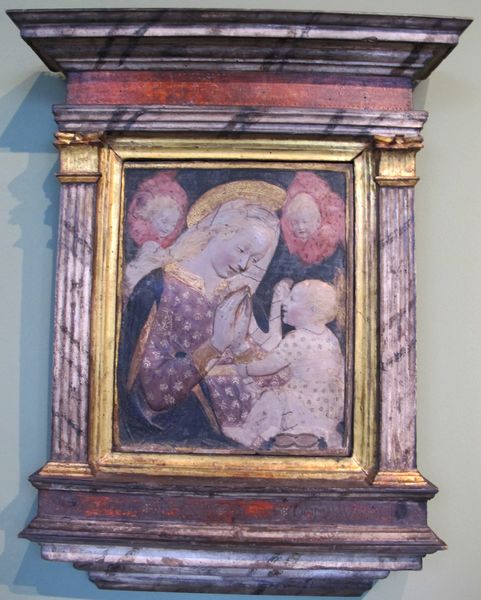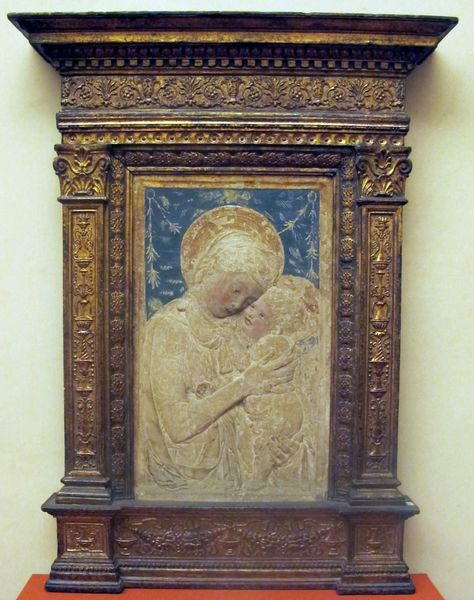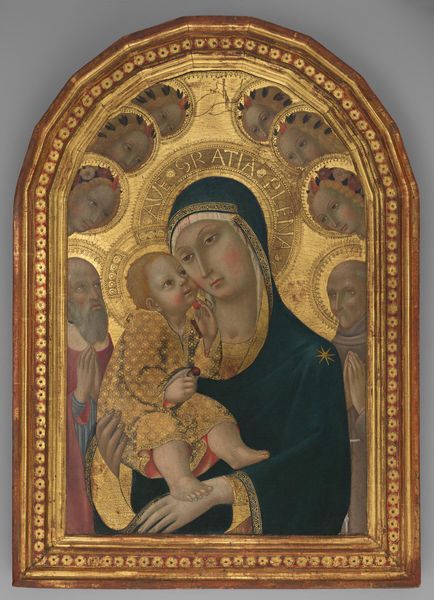
carving, relief, sculpture
#
portrait
#
carving
#
sculpture
#
relief
#
sculptural image
#
figuration
#
sculpture
#
italian-renaissance
Copyright: Public domain
Curator: Directly in front of us, we have "Madonna Col Bambino" by Desiderio da Settignano, an Italian Renaissance artist. It's a carving, a sculptural image in relief that embodies the spirit of its time. Editor: My immediate reaction is one of serene tenderness. The low relief and the soft color palette create an intimate, almost dreamlike atmosphere. It invites quiet contemplation. Curator: Absolutely. This work participates in a longer history, where depictions of the Madonna and Child become vehicles for exploring ideal notions of motherhood, divinity, and the complex social values embedded within the family unit in Renaissance society. What statements do you see? Editor: Looking at it structurally, the composition draws your eye inward, focusing on the central figures. The artist is masterful at playing with texture in such shallow relief; you can almost feel the softness of their garments, the baby's chubby cheek. The halos, lightly indicated, don't overpower but add a subtle spiritual dimension. Curator: I agree, and would push us to also consider this imagery within its broader sociopolitical sphere. It can easily be read through the lens of Renaissance expectations regarding women: piety, chastity, and maternity serving as cornerstones of social stability. These depictions served as both symbols of the era and potent pedagogical tools, solidifying gender roles. Editor: Certainly. From a formal perspective, though, the framing devices draw our eyes into the main tableau, don't you think? And consider that interplay between light and shadow dancing across the subtly carved surface; a wonderful example of how line and form communicate meaning, evoking deep-seated responses. Curator: The very choice of representing this iconic image via a relief carving, invites discourse with prevailing religious norms of the era. Also, consider the historical implications this piece had, in relation to women's patronage. Can we truly extract these portraits from that social fabric? Editor: Well, when considering its form and composition, one could also simply value it through its successful interpretation of Renaissance artistic techniques, which in turn communicate something of this broader historical perspective. Curator: Ultimately, "Madonna Col Bambino" functions on various interpretive registers simultaneously. I think our discussion offers many angles for audiences to appreciate and consider. Editor: Indeed. A fruitful dialogue unveiling some of this artwork's beauty, from whichever point we chose to view it.
Comments
No comments
Be the first to comment and join the conversation on the ultimate creative platform.
